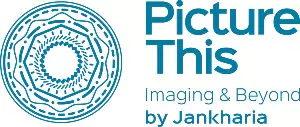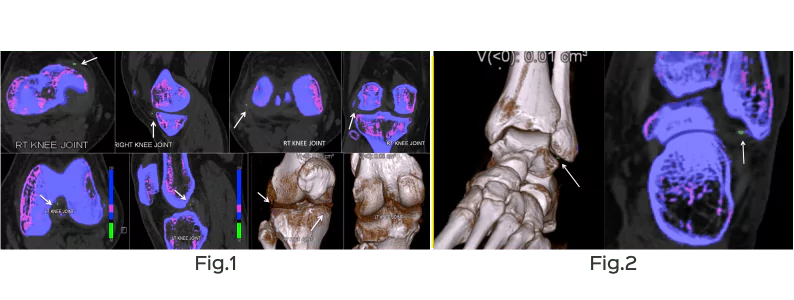Gout is characterized by inflammatory response to the deposition of monosodium urate (MSU) crystals in the joints and soft tissue, which leads to acute or chronic arthropathy and gouty tophi formation. Diagnosis can be made on clinical and biochemical basis, however definite diagnosis requires microscopic demonstration of MSU crystals from the aspiration of the joint fluid, which is invasive and may also have false negative results.
Keeping the dual energy ratio at 1.36, the uric acid crystals lie below the line and are differently color-coded (green), whereas the calcium deposits lie above the line. Hence diagnosis of gout can be easily made, non-invasively (Figs. 1, 2).
With DECT it is also possible to quantify the overall tophus burden or volume of urate deposition without any user variability. This makes it an ideal tool for evaluating even a small change in tophus burden and can be used for follow-up to document response to treatment.


